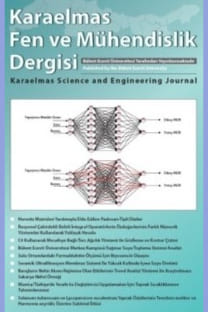Differences in Fatty Acid Profiles, ADEK Vitamins and Sterols of the Yolk between Native Chickens and Geese
Differences in Fatty Acid Profiles, ADEK Vitamins and Sterols of the Yolk between Native Chickens and Geese
Fatty acid, Yolk, Goose, Chicken ADEK vitamins, Cholesterol,
___
- Bragagnolo, N., Rodriguez-Amaya, DB. 2003. Comparison of the cholesterol content of Brazilian chicken and quail eggs. J. Food Compos. Anal., 16: 147–153.
- Carey, C. 1996. Female reproductive energetic, In: Carey C, editor, Avian Energetics and Nutritional Ecology. Chapman and Hall, New York, pp. 324– 74.
- Cherian, G., Sim, J. 1991. Effect of feeding full fat flax and canola seeds to laying hens on the fatty acid composition of eggs, embryos and posthatch chicks. Poultry Sci., 70: 917–22.
- Cherian, G., Sim J. 1992. Preferential accumulation of n-3 fatty acids in the brain of chicks from eggs enriched with n-3 fatty acids. Poultry Sci., 71: 1658–68.
- Chistie, WW. 1990. Gas Chromatography and Lipids. The Oily Press, Glaskow, UK.
- Crawford, MA. 1993. The role of essential fatty acids in neural development: implications for perinatal nutrition. Am. J. Clin. Nutr., 57: 703–710.
- Farrell, DJ. 1998. Enrichment of hen eggs with n-3 long-chain fatty acids and evaluation of enriched eggs in humans. Am. J. Clin. Nutr., 68: 538–44.
- Hara, A. Radin, NS. 1978. Lipid extraction of tissues with a low toxicity solvent. Anal. Biochem., 90: 420–426.
- Hargis, PS. Van Elswyk, ME. 1993. Manipulating the fatty acid composition of poultry meat and eggs for the health conscious consumer. World Poultry Sci. J., 49: 251–64.
- Hess, JL. 1993. Vitamin E; a-tocopherol. In: Alscher RG, Hess JL, Editors. Antioxidants in Higher Plants. CRC Press, Boca Raton, pp. 111–34.
- Innis, SM. 1991. Essential fatty acids in growth and development. Prog. Lipid Res., 30: 39–103.
- Kuksis, A. 1992. Yolk lipids. Biochim. Biophys. Acta, 1124: 205–22.
- Lin DS., Connor, WE., Anderson, GJ. 1991. The incorporation of n-3 and n-6 essential fatty acids into the chick embryo from egg yolks having vastly different fatty acid compositions. Pediatr. Res., 29: 601–605.
- Noble, RC. 1986. Egg lipids. In: Wills RG, Belyavin CG, editors, Egg Quality: Current Patterns and Recent Advances. Butterworths, London, pp.159– 77.
- Scott, ML., Nesheim, M., Young, RJ. 1982. Nutrition of Chicken, 3rd Edn, ML Scott and Assoc Publ, Ithaca, New York.
- Speake, BK., Surai, PF., Noble, RC., Beer, JV., Wood, NAR. 1999. Differences in egg lipid and antioxidant composition between wild and captive pheasants and geese. Comp. Biochem. Phys. B, 124: 101–107.
- Surai PF., Speake BK., Noble, RC. Mezes, M. 1999. Species-specific differences in the fatty acid profiles of the lipids of the yolk and of the liver of the chick. J. Sci. Food Agr., 79: 733-736.
- Surai PF., Royle, NJ. Sparks, NHC. 2000. Fatty acid, carotenoid and vitamin A composition of tissues of free living gulls. Comp. Biochem. Phys. A, 126: 387–396.
- ISSN: 2146-4987
- Yayın Aralığı: 3
- Başlangıç: 2011
- Yayıncı: ZONGULDAK BÜLENT ECEVİT ÜNİVERSİTESİ
Zbigniew ADAMSKİ, Jolanta KRAWİEC, Ewa MARKİEWİCZ, Michał BANKİET, Eliza RYBSKA, Marlena RATAJCZAK, Małgorzata GLAMA, Laura SCRANO, Sabino A. BUFO, Kazimierz ZİEMNİCKİ, Meltem ERDEM, Ender BÜYÜKGÜZEL
Pathogenicity of Four Entomopathogenic Nematodes Species to G. mellonella Larvae
